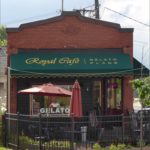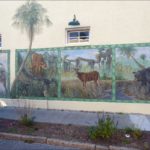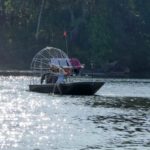August 5, 2024 – Monday
The beauty and stillness of Klewnuggit Inlet always pull us in and make us want to stay longer, but this morning we continued our trip down Grenville Channel. The calm waters and serene surroundings were hard to leave behind, but the promise of new adventures beckoned us onward.
We took a delightful side trip up Lowe Inlet to see Verney Falls. This stunning waterfall, located at the mouth of the Kumowdah River, is a sight to behold. We have heard that during the salmon run you can see salmon jumping in the falls with seals and black bears trying to catch them.
As we made our way back to Grenville Channel, we were treated to a spectacular show by a group of humpback whales. Although they were some distance away, watching them through our binoculars was a splendid experience. Their grace and beauty were mesmerizing, especially the mother and her young one, who seemed to be enjoying their time in the water as much as we enjoyed watching them.
At the end of Grenville Channel, we entered Wright Sound and visited Hartley Bay. This First Nations boardwalk community is located at the mouth of Douglas Channel and is accessible primarily by boat or seaplane. The village has a medical clinic, Tsimshian Cultural Center, and a fish hatchery, but no stores. Residents rely on the Tsimshian Storm ferry, which is owned by three First Nation communities—Kitkatla, Hartley Bay, and Metlakatla—to travel to Prince Rupert, (90 miles north) for shopping. The ferry service operates twice a week, providing a vital link for the community.
We spent the evening in Coghlan Anchorage with seven other boats, including a Canadian Coast Guard vessel, a schooner, two fishing boats, a beautiful French sailing boat, and a trawler. The anchorage was a peaceful end to a day filled with the wonders of nature and the joy of exploration.




Verney Falls Video






















































































